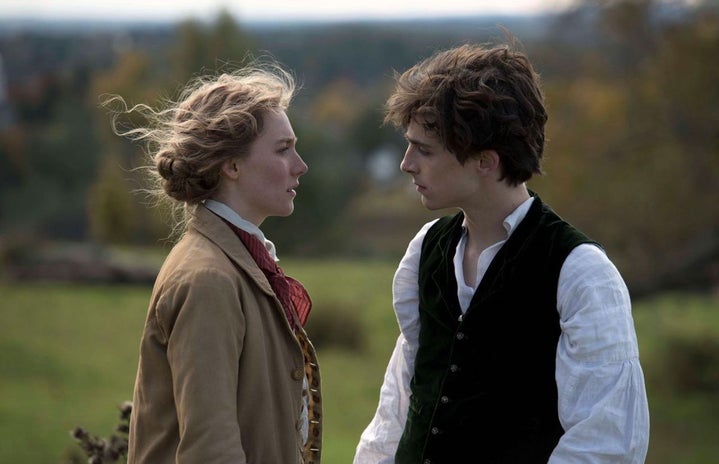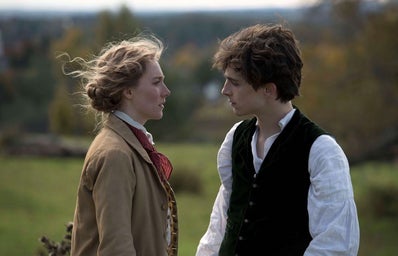In early 2018, influenced by the unavoidable buzz around a seemingly unconventional runner for the Oscars, I had my first brush with Greta Gerwig through Lady Bird – a coming-of-age flick about a teenage girl from Sacramento. I loved the movie so much that when her adaptation of one of my long-time favourite novels, Little Women, was announced, I awaited its release with almost childlike excitement. An eagerness, much similar to that which I felt as a 10-year-old on the bus ride home from school every evening, impatiently waiting to be reunited with my grandmother so that we could read one more chapter of the novel together. Though I was only introduced to Greta Gerwig upon her debut directorial ventures reaching mainstream eyes, she had been an indie darling for long before that, with her work as an actor and a writer having always received raving critic reviews. I loved Lady Bird and Little Women so much that I was overcome with an overwhelming curiosity to go through the entirety of her filmography (a feat I accomplished over one very fun weekend). It was then that I came across Frances Ha (2012), a movie that steadily climbed through the ranks to become one of my top comfort watches.
To say that Gerwig has then become one of my favorite filmmakers would be an understatement. The main feature of her films that has consistently stood out to me, especially in her descriptions of her own creative process, is the characters that she creates. Gerwig’s films seemingly do not promise grandiose through their narratives – the plots that she creates are simple – stories of average people doing average things- but the characters that live and breathe within them act as a vessel for her to showcase the most brilliant of ideas. One can observe this most starkly in her protagonists. In Frances Halladay, an aspiring (struggling) dancer in her late twenties stumbling through her life in New York. In Christine “Lady Bird” MacPherson, an angsty Sacramento teen on the precipice of high school graduation navigating her complicated relationship with her mother. And in her interpretation of Louisa May Alcott’s Jo March, a young woman in 19th century, Massachusetts attempting to define her personhood in a society adamant on stopping her from doing so.
On the surface, these Gerwig heroines seem quite different from each other. They are young women in different stages of their lives, living in different time periods, in different regions and with different struggles. When one digs deeper though, one begins to observe a pattern in the characters that Gerwig loves to write about. They have similar wants and similar needs, ones that are characteristic features and staples of what Gerwig likes to depict in her creative work. Their struggles are painfully human and painfully relatable. They are the most befitting reflection of The Universal Human Experience.
Her characters are full of life, their never-ending energy and their zeal for living leap out of the screen with every dialogue they deliver. As witnessed in Frances who takes these instructions quite literally and leaps, dances and runs gracefully through her movie, navigating through her life. Or in Lady Bird, who is so eager to chart out her independence and who desperately wishes to ‘live through something’. Even working with Alcott’s creation in Jo, Gerwig depicts the overwhelming want she has to carve out space for herself in the world, to be as great a writer as the ones she has admired. Gerwig chooses to focus on characters with great wants, and very human wants, whose lust for living and whose tendency to go ‘just too far’ in getting their wants fulfilled is something that allows them to get through challenges that life places in their path.
Her heroines also don’t claim to be saints. They have flaws, they fall prey to their impulses, to their selfishness and to petty arrogance. She presents a refreshing portrayal of women on screen, as three-dimensional characters, with real faults. She also writes about love in a way so tender that I have never come across anywhere else. Love, for the Gerwig heroine, does not only focus on romantic love. It is love one feels towards themselves, towards their friends and towards their family. It is the romance of life itself. Uniquely, with her depictions of love, Gerwig also artfully charts out her depictions of loneliness. Through Jo March’s struggle with the aftermath of finding herself alone, we become aware of how we only realize how much we want to be loved when in the absence of it.
Gerwig thus masterfully creates films that mirror a very relatable state of life. Despite the many dissimilarities I carry with the Gerwig heroine, she somehow still represents me, my ideals and my experiences in many ways. I might even attempt to represent her. As she traverses through her journey of navigating love and life, I travel with her. I admire her unpretentious intellectualism, her awkwardness and charm, her eager want for independence, her human want for love, her coming to terms with her pitfalls and her subsequent fearless march on forward.


